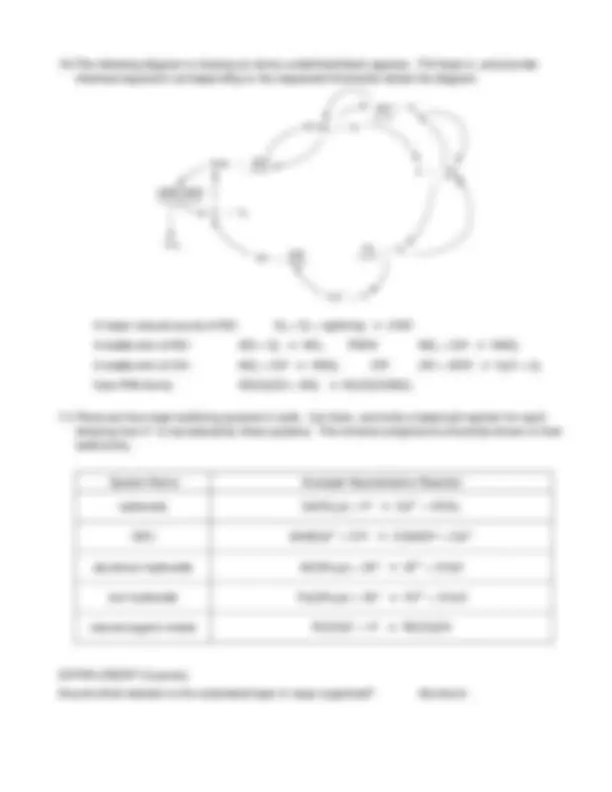



Study with the several resources on Docsity

Earn points by helping other students or get them with a premium plan


Prepare for your exams
Study with the several resources on Docsity

Earn points to download
Earn points by helping other students or get them with a premium plan
Community
Ask the community for help and clear up your study doubts
Discover the best universities in your country according to Docsity users
Free resources
Download our free guides on studying techniques, anxiety management strategies, and thesis advice from Docsity tutors
A key for exam 2 in chemistry 331, focusing on primary tropospheric pollutants, their major sources, and secondary pollutants, as well as fuel cells and their reactions. It includes multiple-choice questions and a sketch request.
Typology: Exams
1 / 3

This page cannot be seen from the preview
Don't miss anything!


October 17 th, 2008 Chemistry 331, Exam 2 KEY 50 minutes
Part A : Mixed bag, 5 points each.
Primary Pollutant Major Source Secondary Pollutant NO mobile HNO 3
SO 2 stationary H 2 SO 4
VOC’s mobile aldehydes, or organic radicals
Ozone is considered a primary tropospheric pollutant. T F In photochemical smog, oxidation of NO occurs primarily through reaction with O 3. T F Fission of a nucleus always results in a release of energy. T F Carbonate minerals do not result from the weathering of primary minerals. T F When soils are acidified, carbonate buffering typically runs out before CEC buffering. T F
The 3-way catalytic converter is the control on NO (reduction to N 2 )
( Circle the correct choices ) Modern nuclear power plants obtain energy from ( fusion/ fission ) of (^235 U / 238 U ), and control rods are used to limit the number of ( neutrons / protons ) reacting.
Identify the mobile charge in the electrolyte for each type of fuel cell specified.
Molten carbonate fuel cell: CO 3 2- Alkaline fuel cell: OH- Phosphoric acid fuel cell: H+ Solid oxide fuel cell: O2-
natural organic matter (acids) , and the charge increases as pH increases.
H^ CH^3
H
H
H
H
CH 3
H OH
CH 3
CH 3 H
H
H
H
H
H
Rn Æ α + Po
0.42 days 6.0 days 13 days 18 days
218 84
4 2
222 86
ln(0.10) = - (0.693 / 3.83 days) t t = 12.7 days
Part B : 20 points each. Show all work.
anode cathode
O2-
_2H +
O 2-_
H 2 O
Electrolyte material: ceramic, metal oxide
e-